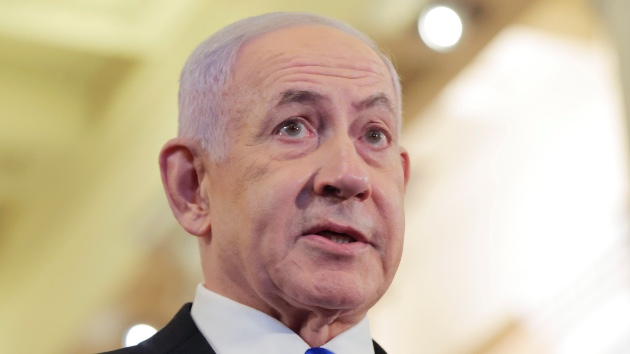(DOHA, Qatar) — Israel has informed the U.S. that the chances of success of its strikes Tuesday on a Hamas residence in Doha, Qatar, have “decreased significantly,” two Israeli sources familiar with the matter told ABC News — likely confirming Hamas’ assertion that the strikes failed to kill top Hamas officials.
Five Hamas members and a Qatari official were killed in the strike. Hamas’ senior leaders survived the strike, Hamas said Tuesday.
“There was a meeting of the negotiating team and some Hamas leaders to discuss the ideas sent by the United States and the paper sent by President Trump,” Hamas political bureau official Suhail al-Hindi told Al Jazeera of when the strike took place.
Among those killed were the son of a senior Hamas leader, Dr. Khalil Al-Hayya — the head of the Hamas movement in Gaza and the head of Hamas’ negotiating team for a ceasefire with Israel — and an aide. Al-Hayya himself survived, according to Hamas.
Israeli Prime Minister Benjamin Netanyahu said Israel acted “wholly independently,” and took “full responsibility” for the strike in Doha on Hamas leadership in a brief statement Tuesday.
Netanyahu said he “convened the heads of Israel’s security organizations,” at noon local Israeli time Tuesday and “authorized a surgical precision strike” on Hamas leadership.
The strike targeted the residential headquarters of several members of the Hamas Political Bureau in Doha, according to Qatar.
Israel has faced criticism over the attack, with Arab nations, the United Kingdom and France all condemning the attack that took place on sovereign land.
President Donald Trump said he was “not thrilled” with the Israeli strike in Doha on Tuesday night ahead of a dinner with several members of his Cabinet.
“I’m not thrilled about the whole situation. It’s not a good situation, but I will say this, we want the hostages back, but we are not thrilled about the way that went down today,” Trump said.
“I was very unhappy about it, very unhappy about every aspect, and we got to get the hostages back, but I was very unhappy about the way that went down,” Trump said.
Qatar also condemned the attack, saying the “criminal attack constitutes a flagrant violation of all international laws and norms and a serious threat to the security and safety of Qataris and residents of Qatar,” a spokesperson for Qatar’s Ministry of Foreign Affairs posted on X.
Qatar said it will continue to mediate ceasefire negotiations between Hamas and Israel, as it has done alongside Egypt.
Hamas leadership and its primary negotiators have been based in Doha for years while trying to get a ceasefire and hostage release deal.
Israeli officials said the strikes on Doha were “completely justified,” alleging this Hamas leadership initiated and organized the Oct. 7, 2023, attack on Israel.
“Israel’s security policy is clear — Israel’s long arm will act against its enemies everywhere. There is no place for them to hide,” Israeli Defense Minister Israel Katz said in a statement Wednesday.
“If the Hamas murderers and rapists do not accept Israel’s conditions for ending the war, primarily the release of all hostages and the disarmament of their weapons — they will be destroyed and Gaza will be destroyed,” Katz said.
Qatar is home to the largest U.S. military base in the region. Al Udeid Air Base was attacked by Iran in June in retaliation for U.S. strikes on Iranian nuclear facilities, with Qatari forces helping the U.S. to intercept the missiles.
Earlier Tuesday, Trump said the U.S. “feels badly” about the location of the attack and added that “unilaterally bombing inside Qatar, a sovereign nation and close ally of the United States that is working very hard and bravely taking risks with us to broker peace does not advance Israel or America’s goals,” in a statement read by White House press secretary Karoline Leavitt.
Copyright © 2025, ABC Audio. All rights reserved.



